| Lake Huron is connected to Lake Michigan by the
Mackinaw Straits. The straits also separate the Upper Peninsula from the
Lower Peninsula, which comprises the main part of
Michigan. They are joined by this magnificent bridge, high enough for the
ships to pass safely underneath. The bridge is almost two miles long. | 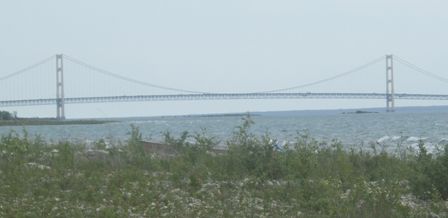 |
 |
It is a very elegant bridge especially when the air and sunlight allow a
clear view. This is the view from the Lower Peninsula in Fort
Michilimackinac. |
| This is a replica of the original fort built on this
site right on the shore. The first fort here was built by Captain De Lignery in 1715.
It replaced an earlier fort built on the north side of the strait at St
Ignace in 1690 and abandoned in 1698. The fort changed hands between the
French and the English many times and was later moved (including all the
buildings and, most importantly, the church) by the British to an island in the
straits which was deemed easier to defend. | 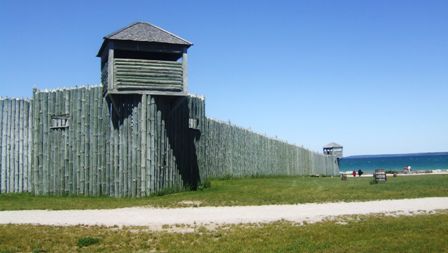 |
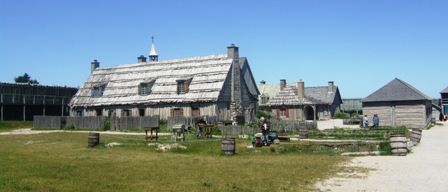 |
The buildings are built of split logs with wooden roofs and the gaps between
the logs filled with a mud mortar. They are still undertaking archaeological
digs on site to find out more about the original buildings. |
| As we have seen on other living history sites, they
grow a number of vegetables the same way as they would have done in the
1600s. |  |
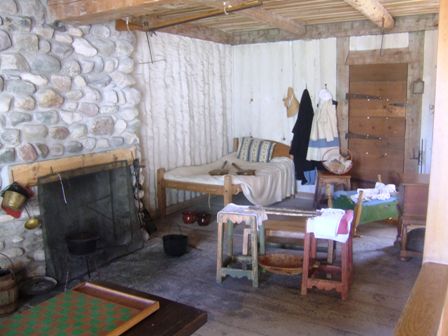 |
The insides of some of the buildings were well set up with stone around the
fireplaces and well-made but simple furniture. |
| Amongst the larger buildings is the storehouse, which
would have been one of the first buildings erected. The fort was also a major
trading post between the Indians and the trappers and the Europeans. This is
the attic, with sample packs of furs. We took particular interest in the
construction of the roof! | 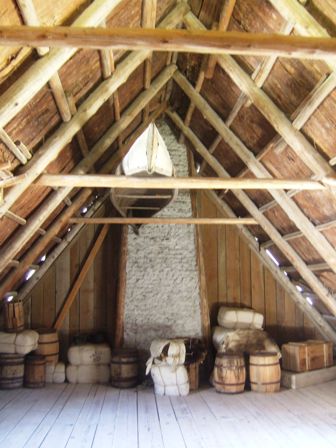 |
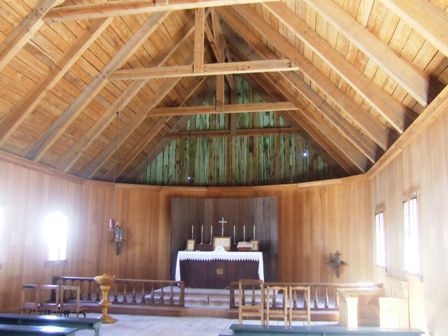 |
Another major building in the fort was the church. They did not always have a regular
priest but relied on travellers who passed that way. One such Catholic
missionary was Father Pierre Gibault who visited in the summers of 1768,
1773 and 1775. He wrote in his diary that he spent 10 hours hearing
confessions on one such visit, besides conducting marriages and baptisms. |
| The external defences of the fort were serious and
secure enough to deter most attacks. However there was an Indian attack
on the British occupants of the time - the Indian men were playing a game similar to
lacrosse and tossed the ball over the fort walls. They all dashed inside as
if to recover the ball, but as they did so they grabbed their weapons from
their women who had concealed them in their clothes, and quickly overpowered
the British soldiers. | 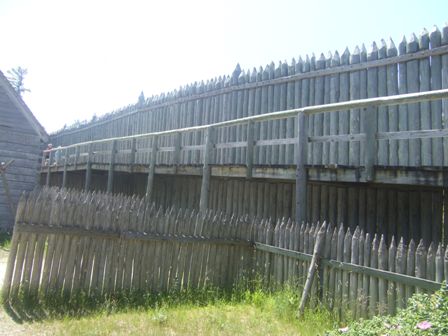 |
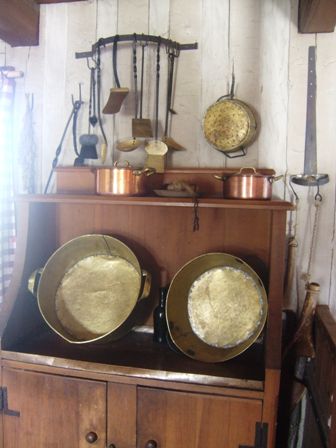 |
There are many examples of the sort of utensils which were in use at the
time. Many of these are large since a lot of the cooking was communal. |
| There is a museum displaying some of the 5 million archaeological finds they have made on this site. | 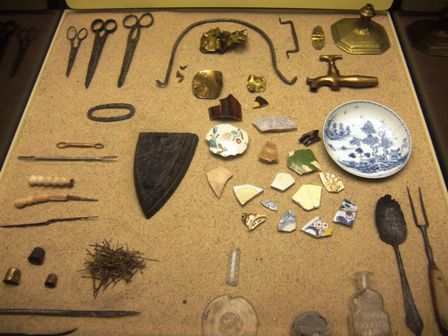 |
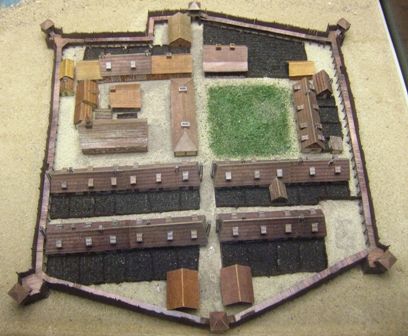 |
The fort had several different Layouts and collections of buildings within its
grounds over the years. This is a model of one such incarnation covering
the period 1761-79 when the British had taken control from the French. Many
of the traders lived in a large village just to the east of the fort. |
| This is a model of one of the original archaeological
digs on the site of a house, and has a simulation of the house as it would
have been superimposed on it. | 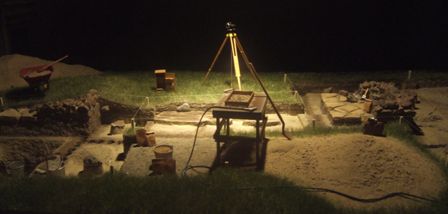 |
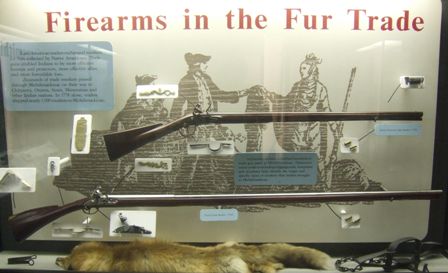 |
The original magazine was constructed partially underground to
protect everybody from the effects of an explosion. Below the reconstruction
you can still see the remains of its foundations, which also make an
appropriate area to display examples of the firearms being used then. |
| The King's warehouse was full of all sorts of goods
including spare cannons. It was probably the only military store within
hundreds of miles. | 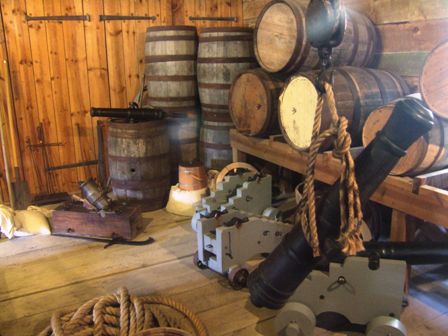 |
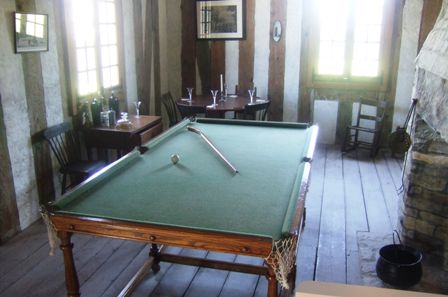 |
However the fort did have some modern conveniences (including separate
latrines for the officers and the men). This billiard table was quite a
surprise in the commandant's quarters. |
| This mannequin is of Major Arent Schuyler De Peyster
who was the commander of the King's 8th regiment of foot stationed here
1774-9. His fair treatment and even disposition won the respect of Indians,
traders and soldiers alike. His wife Rebecca who lived here with him led the
social life of the community. | 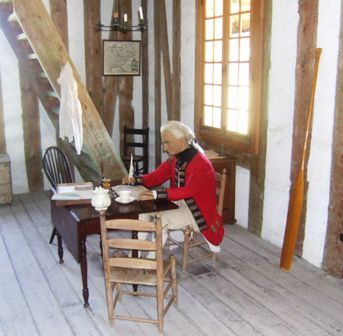 |
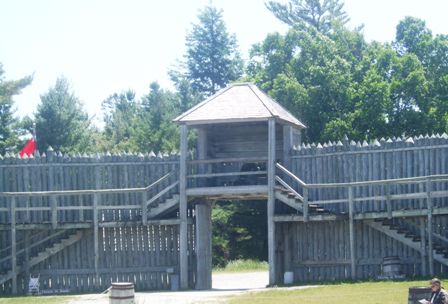 |
Many of the traders lived outside the fort which enabled the access to be
restricted to avoid potential trouble. |
| The French held the fort until 1761 when it was
captured by the English who held it until 1781 when the Americans gained
control. | 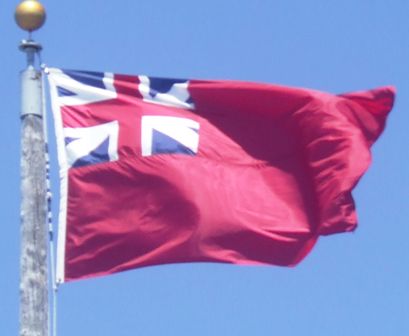 |
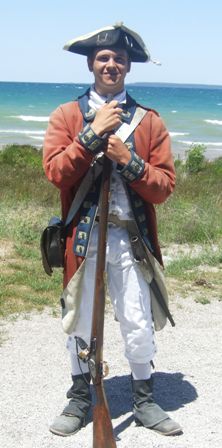 |
A docent soldier representing a redcoat of the 1770s. He admitted that today
was pleasantly warm despite the breeze coming off the lake. It could be a
lot less pleasant a posting. |
| Firing the cannon is good for the tourists so the gun
crew (of two rather than fourteen) loaded their cannon with 2lb of black
powder and fired it. A full charge of 10lb would have fired a cannon ball to
the opposite shore. Note the stand for the musket. | 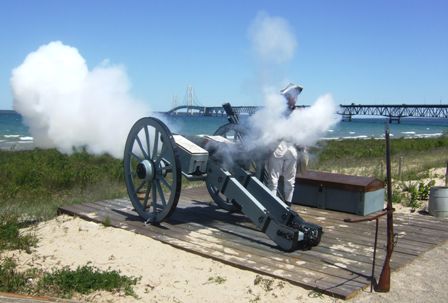 |
|